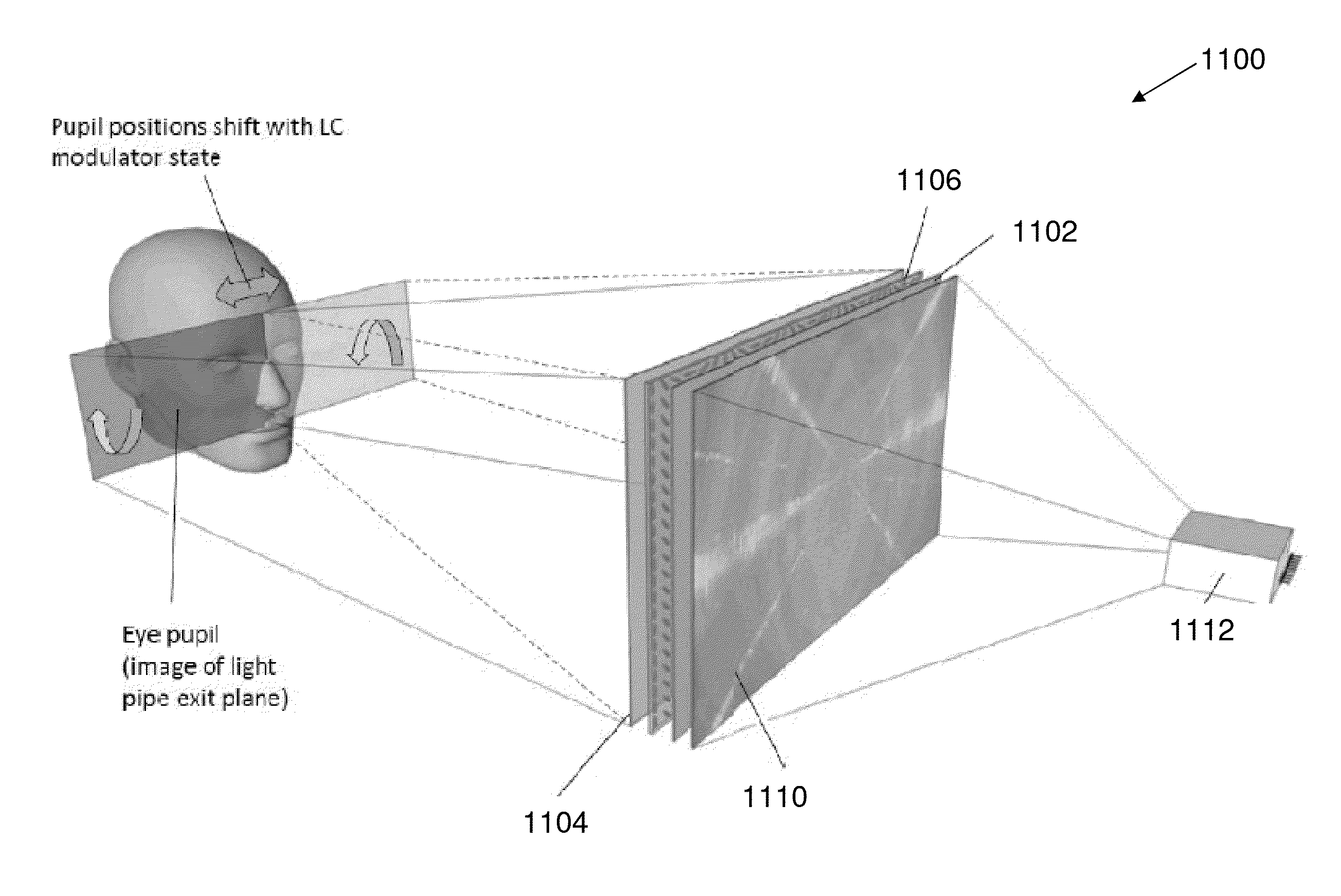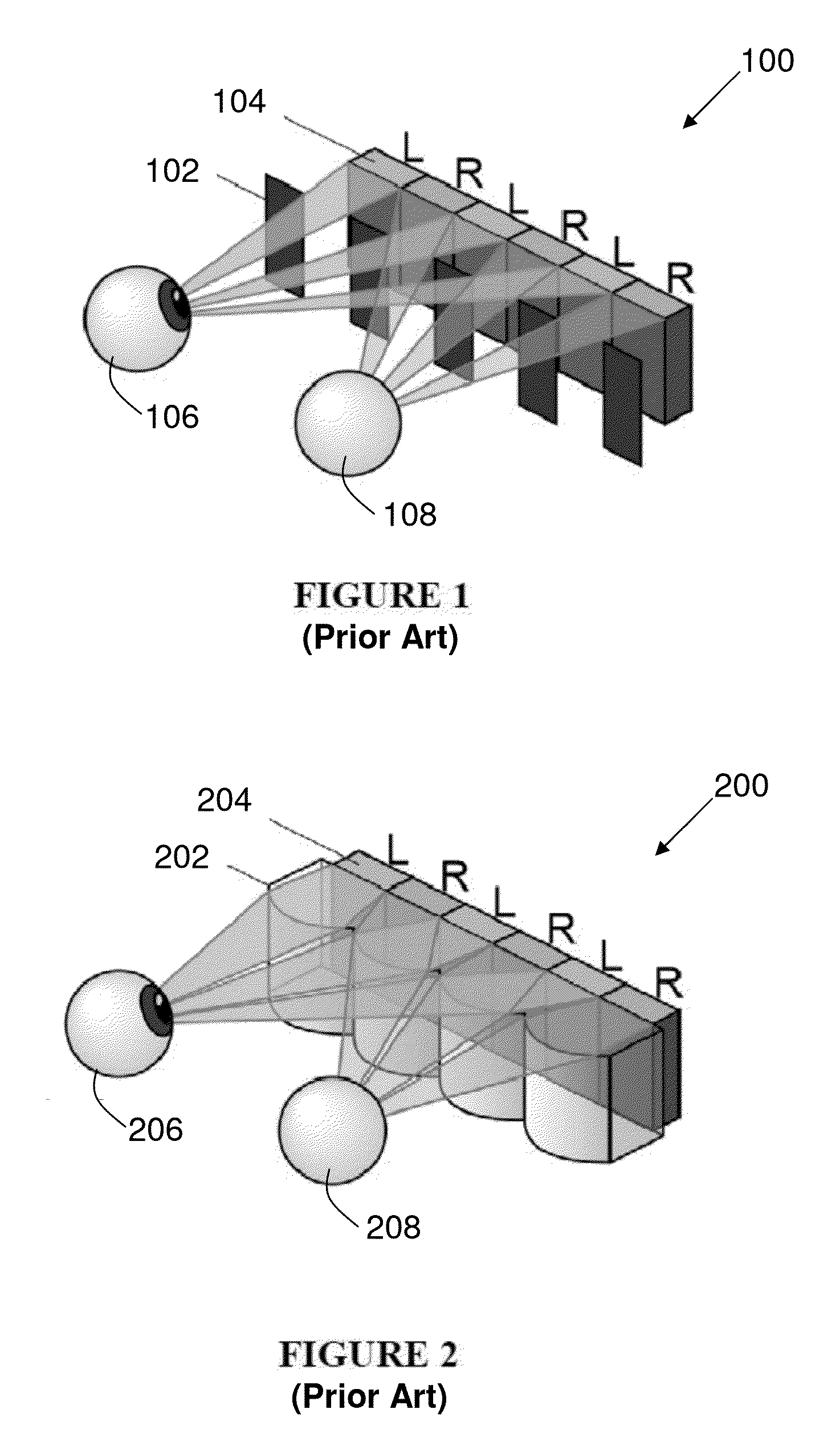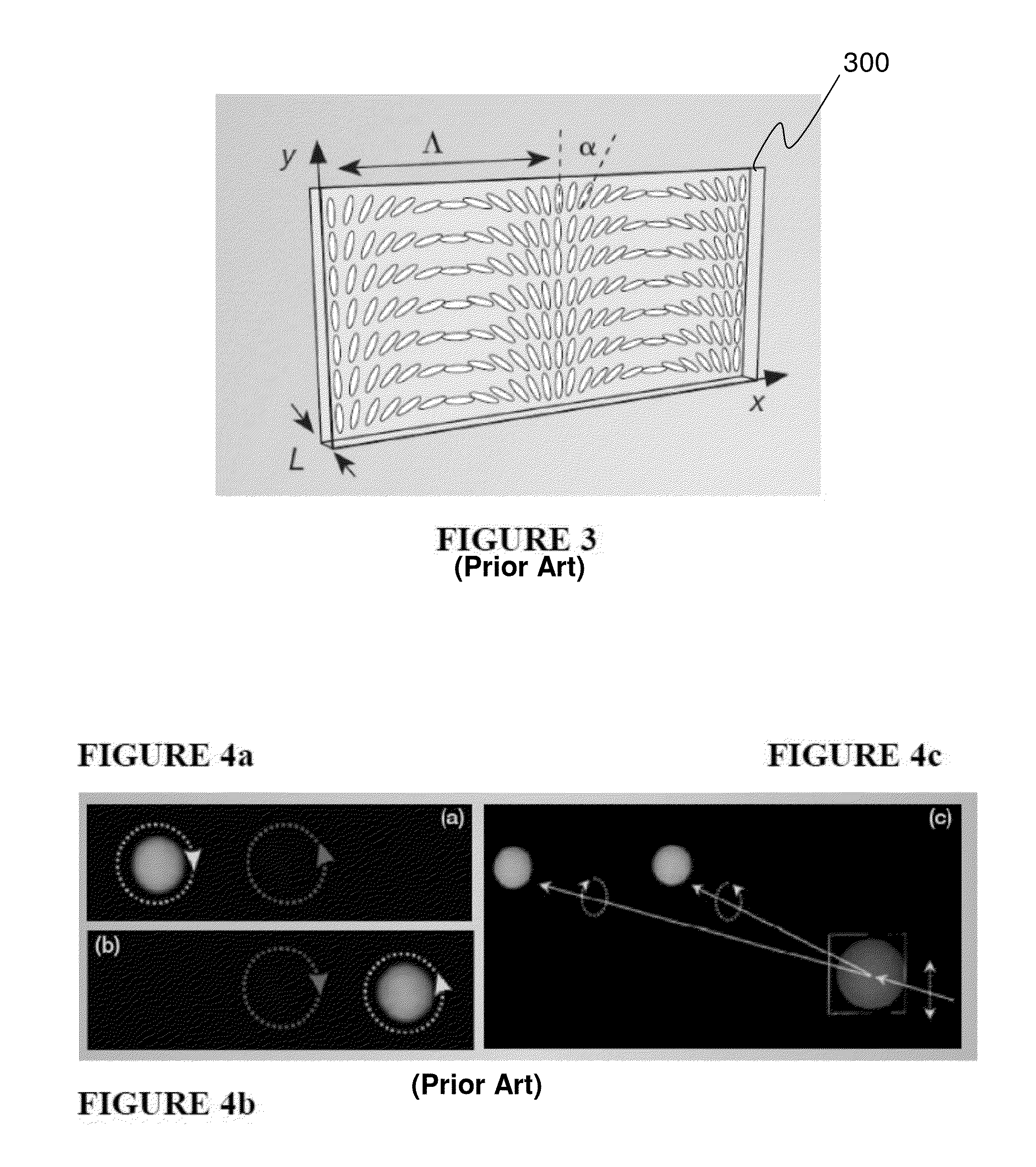Autostereoscopic display with a passive cycloidal diffractive waveplate
a technology of diffractive wave plate and autostereoscopic display, which is applied in the direction of color television details, instruments, electrical equipment, etc., can solve the problem of reducing the effective horizontal pixel count viewable for each eye by hal
- Summary
- Abstract
- Description
- Claims
- Application Information
AI Technical Summary
Benefits of technology
Problems solved by technology
Method used
Image
Examples
Embodiment Construction
[0030]A static (i.e., passive) cycloidal diffractive waveplate (CDW) is an optical component which may be approximately a micron-thick with diffraction efficiency as high as a Bragg grating (˜100%), but with a spectrum of wavelengths and divergence angles that are two to three orders broader. Typical CDW devices are fabricated utilizing photo-alignment layers that are exposed to two coherently orthogonal circular polarized beams generating a specific intensity pattern, which is imprinted into the alignment layer, and which then has a layer of reactive mesogen (polymerizable liquid crystal material) material spin coated on and fixated with standard processing.
[0031]FIG. 3 is a schematic diagram illustrating liquid crystal optical axis orientation of a cycloidal diffractive waveplate 300, with L being film thickness, α and Λ being functions of exposure wavelength and incident angles. FIG. 3 illustrates a conventional cycloidal diffractive waveplate 300 and the optical axis orientation...
PUM
 Login to View More
Login to View More Abstract
Description
Claims
Application Information
 Login to View More
Login to View More - R&D
- Intellectual Property
- Life Sciences
- Materials
- Tech Scout
- Unparalleled Data Quality
- Higher Quality Content
- 60% Fewer Hallucinations
Browse by: Latest US Patents, China's latest patents, Technical Efficacy Thesaurus, Application Domain, Technology Topic, Popular Technical Reports.
© 2025 PatSnap. All rights reserved.Legal|Privacy policy|Modern Slavery Act Transparency Statement|Sitemap|About US| Contact US: help@patsnap.com



